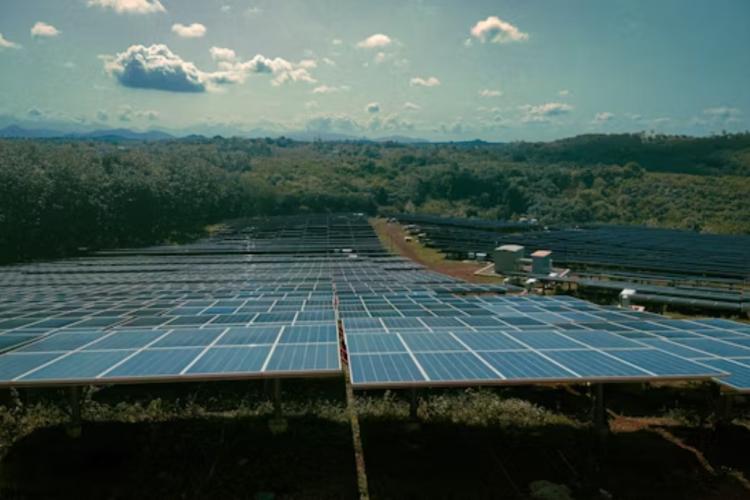
Solar energy surge: India has made remarkable progress in expanding its renewable energy capacity, growing it to 224 gigawatts out of a total installed power capacity of 470 GW. With this momentum, the country appears on track to meet its 2030 target of 500 GW from non-fossil fuel sources. Yet, this achievement presents a complex challenge: how to integrate such vast quantities of intermittent energy into the grid without destabilising it.
The surge in solar, wind, and small hydro power is welcome—but these sources are inherently variable. Solar peaks during the day and vanishes at dusk, while wind power ebbs and flows unpredictably. This intermittency has begun to strain India’s power grid, creating operational uncertainties for grid controllers and thermal plants alike. Without robust forecasting, storage, and regulatory mechanisms, the rapid expansion of green power could undermine grid reliability.
READ | Northeast India’s economic revival hinges on social harmony
The duck curve dilemma
A vivid illustration of this problem is the now-familiar ‘duck curve’—a term that describes how solar power floods the grid during daylight hours when demand is low, followed by a sharp rise in demand during the evening when solar generation drops. This mismatch between supply and demand creates severe balancing challenges. India’s evening power consumption has spiked in recent years due to increased household electrification and greater use of air conditioners and refrigerators.
Peak power demand reached 243 GW in 2024, according to the Central Electricity Authority (CEA), with the evening surge becoming more pronounced. Yet, just when demand peaks, renewable output wanes—forcing grid operators to fall back on thermal generation.
Lessons from abroad and warning signs
Recent international experience reveals the risks of unmanaged RE integration. In Spain, a sudden drop in renewable generation last month destabilised the grid, triggering power outages that cascaded into France. French utilities halted imports from Spain in response, compounding the imbalance. The fallout lasted nearly 10 hours and caused sustained disruption.
India’s renewable capacity has not yet reached such levels of volatility, but it is accelerating fast. The ministry of new and renewable energy (MNRE) reports that India added 26.7 GW of solar capacity in 2024 alone—raising concerns that the grid could face similar shocks unless storage and load-balancing infrastructure keeps pace.
Solar energy storage: The missing link
One of the core challenges is the absence of large-scale energy storage. Without it, excess renewable power generated during the day cannot be stored for use in the evening, compounding the duck curve issue. Prices often collapse during periods of excess solar power—sometimes even turning negative—making it difficult for traditional baseload plants, including nuclear, to operate profitably.
India is beginning to address this gap. As of 2025, the country has 2 GW of operational battery energy storage systems (BESS), with another 10 GW under development. Pumped storage hydropower, with a potential of 96 GW, is also being prioritised, including large projects like the 1.2 GW Tehri PSH in Uttarakhand. These systems can store surplus energy during the day and release it during peak demand hours, smoothing out the supply curve.
Green hydrogen is also being explored as a long-term storage solution. Under the National Green Hydrogen Mission, India aims to produce 0.5 million metric tonnes of green hydrogen annually by 2030. This could serve as an alternative energy source during low-renewable periods, although the technology is still in its infancy.
Operating the grid: A balancing act
Grid operators, under the guidance of Grid-India, are experimenting with two major operational strategies. The first involves running thermal power plants in two shifts—morning and evening—aligned with low solar generation. The second approach allows thermal units to operate at partial load (40–55% heat rate) during midday solar peaks and ramp up quickly during dips in RE supply.
These efforts hinge on compensation mechanisms. The Central Electricity Regulatory Commission (CERC) is drafting guidelines to remunerate thermal generators for reduced efficiency during flexible operations, which currently lack financial viability.
A recent Grid-India study revealed that during peak solar hours in 2024, regions with high RE penetration experienced sharp voltage fluctuations and large deviations from planned schedules. This unpredictability has prompted discussions around tighter regulations for forecasting and real-time scheduling of RE assets.
Policy and market reforms
To manage this green transition, the government has introduced the Indian Electricity Grid Code (IEGC) 2023, which enforces pricing mechanisms for reactive power management. RE developers are now incentivised—or penalised—based on how well they support grid stability. The CEA is also updating technical standards and providing data to enhance grid forecasting and responsiveness.
International models offer valuable insights. Germany’s Energiewende has leaned heavily on grid-scale storage and demand-side flexibility, while California has tackled the duck curve through time-of-use tariffs and incentives for energy storage. India is beginning to draw from these experiences, but its own solutions will need to be tailored to its vast geography and rapidly growing energy demand.
India’s challenge is no longer just about building more renewable capacity—it is about managing it. The next frontier lies in transforming the power sector’s operational backbone, enhancing storage capabilities, incentivising flexible generation, and building a regulatory architecture that rewards resilience. If India succeeds, it will not only meet its climate goals but also set a global example for managing the green energy transition in a fast-growing economy.
